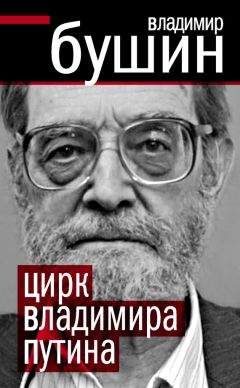Steven Dubner - Freakonomics
Drawn from a pair of “smart” databases, here is a sampling of today’s high-end names. Some of them, as unlikely as it seems, are bound to become tomorrow’s mainstream names. Before you scoff, ask yourself this: do any of them seem more ridiculous than “Madison” might have seemed ten years ago?
Most Popular Girl’s Names of 2015?
• Annika
• Ansley
• Ava
• Avery
• Aviva
• Clementine
• Eleanor
• Ella
• Emma
• Fiona
• Flannery
• Grace
• Isabel
• Kate
• Lara
• Linden
• Maeve
• Marie-Claire
• Maya
• Philippa
• Phoebe
• Quinn
• Sophie
• Waverly
Most Popular Boys’ Names of 2015?
• Aidan
• Aldo
• Anderson
• Ansel
• Asher
• Beckett
• Bennett
• Carter
• Cooper
• Finnegan
• Harper
• Jackson
• Johan
• Keyon
• Liam
• Maximilian
• McGregor
• Oliver
• Reagan
• Sander
• Sumner
• Will
Obviously, a variety of motives are at work when parents consider a name for their child. They may want something traditional or something bohemian, something unique or something perfectly trendy. It would be an overstatement to suggest that all parents are looking—whether consciously or not—for a
“smart” name or a “high-end” name. But they are all trying to signal something with a name, whether the name is Winner or Loser, Madison or Amber, Shithead or Sander, DeShawn or Jake. What the California names data suggest is that an overwhelming number of parents use a name to signal their own expectations of how successful their children will be. The name isn’t likely to make a shard of difference. But the parents can at least feel better knowing that, from the very outset, they tried their best.
EPILOGUE:
Two Paths to Harvard
And now, with all these pages behind us, an early promise has been confirmed: this book indeed has no “unifying theme.”
But if there is no unifying theme to Freakonomics, there is at least a common thread running through the everyday application of Freakonomics. It has to do with thinking sensibly about how people behave in the real world. All it requires is a novel way of looking, of discerning, of measuring. This isn’t necessarily a difficult task, nor does it require supersophisticated thinking. We have essentially tried to figure out what the typical gang member or sumo wrestler figured out on his own (although we had to do so in reverse).
Will the ability to think such thoughts improve your life materially? Probably not. Perhaps you’ll put up a sturdy gate around your swimming pool or push your real-estate agent to work a little harder. But the net effect is likely to be more subtle than that. You might become more skeptical of the conventional wisdom; you may begin looking for hints as to how things aren’t quite what they seem; perhaps you will seek out some trove of data and sift through it, balancing your intelligence and your intuition to arrive at a glimmering new idea. Some of these ideas might make you uncomfortable, even unpopular. To claim that legalized abortion resulted in a massive drop in crime will inevitably lead to explosive moral reactions. But the fact of the matter is that Freakonomics-style thinking simply doesn’t traffic in morality. As we suggested near the beginning of this book, if morality represents an ideal world, then economics represents the actual world.
The most likely result of having read this book is a simple one: you may find yourself asking a lot of questions. Many of them will lead to nothing. But some will produce answers that are interesting, even surprising. Consider the question posed at the beginning of this book’s penultimate chapter: how much do parents really matter?
The data have by now made it clear that parents matter a great deal in some regards (most of which have been long determined by the time a child is born) and not at all in others (the ones we obsess about). You can’t blame parents for trying to do something—anything—to help their child succeed, even if it’s something as irrelevant as giving him a high-end first name.
But there is also a huge random effect that rains down on even the best parenting efforts. If you are in any way typical, you have known some intelligent and devoted parents whose child went badly off the rails. You may have also known of the opposite instance, where a child succeeds despite his parents’ worst intentions and habits.
Recall for a moment the two boys, one white and one black, who were described in chapter 5. The white boy who grew up outside Chicago had smart, solid, encouraging, loving parents who stressed education and family. The black boy from Daytona Beach was abandoned by his mother, was beaten by his father, and had become a full-fledged gangster by his teens. So what became of the two boys?
The second child, now twenty-seven years old, is Roland G. Fryer Jr., the Harvard economist studying black underachievement.
The white child also made it to Harvard. But soon after, things went badly for him. His name is Ted Kaczynski.
NOTES
The bulk of this book was drawn from the research of Steven D. Levitt, often done in concert with one or more collaborators. The notes below include citations for the academic papers on which the material was based. We have also made liberal use of other scholars’ research, which is also cited below; we thank them not only for their work but for the subsequent conversations that allowed us to best present their ideas. Other material in this book comes from previously unpublished research or interviews by one or both of the authors. Material not listed in these notes was drawn from readily accessible databases, news reports, and reference works.
AN EXPLANATORY NOTE
THE ITALICIZED EXCERPTS in this section and elsewhere originally appeared in Stephen J. Dubner, “The Probability That a Real-Estate Agent Is Cheating You (and Other Riddles of Modern Life),” The New York Times Magazine, August 3, 2003.
INTRODUCTION: THE HIDDEN SIDE OF EVERYTHING
THE FALL AND FALL OF CRIME: The crime-drop argument can be found in Steven D. Levitt, “Understanding Why Crime Fell in the 1990’s: Four Factors That Explain the Decline and Six That Do Not,” Journal of Economic Perspectives 18, no. 1 (2004), pp. 163–90. / 3–4 The superpredator: See Eric Pooley, “Kids with Guns,” New York Magazine, August 9, 1991; John J. DiIulio Jr., “The Coming of the Super-Predators,” Weekly Standard, November 27, 1995; Tom Morganthau,
“The Lull Before the Storm?” Newsweek, December 4, 1995; Richard Zoglin,
“Now for the Bad News: A Teenage Time Bomb,” Time, January 15, 1996; and Ted Gest, “Crime Time Bomb,” U.S. News & World Report, March 25, 1996. / 4
James Alan Fox’s dire predictions can be found in a pair of government reports:
“Trends in Juvenile Violence: A Report to the United States Attorney General on Current and Future Rates of Juvenile Offending” (Washington, D.C.: Bureau of Justice Statistics, 1996) and “Trends in Juvenile Violence: An Update”
(Washington, D.C.: Bureau of Justice Statistics, 1997). / 4 President Clinton’s fearful comment came during a 1997 speech in Boston announcing new anti-crime measures; see Alison Mitchell, “Clinton Urges Campaign Against Youth Crime,” New York Times, February 20, 1997. / 5–6 The story of Norma McCorvey/Jane Roe: See Douglas S. Wood, “Who Is ‘Jane Roe?’: Anonymous No More, Norma McCorvey No Longer Supports Abortion Rights,” CNN.com, June 18, 2003; and Norma McCorvey with Andy Meisler, I Am Roe: My Life, Roe v.
Wade, and Freedom of Choice (New York: HarperCollins, 1994). / 6 The abortion-crime link is argued in two papers by Steven D. Levitt and John J.
Donohue III: “The Impact of Legalized Abortion on Crime,” Quarterly Journal of Economics 116, no. 2 (2001), pp. 379–420; and “Further Evidence That Legalized Abortion Lowered Crime: A Response to Joyce,” Journal of Human Resources 39, no. 1 (2004), pp. 29–49.7–9
THE REAL REAL-ESTATE STORY: The study measuring how a real-estate agent treats the sale of her own home versus a client’s home is Steven D. Levitt and Chad Syverson, “Market Distortions When Agents Are Better Informed: A Theoretical and Empirical Exploration of the Value of Information in Real Estate Transactions,” National Bureau of Economic Research working paper, 2005. / 7–
8 The lax California auto mechanics are discussed in Thomas Hubbard, “An Empirical Examination of Moral Hazard in the Vehicle Inspection Market,”
RAND Journal of Economics 29, no. 1 (1998), pp. 406–26; and in Thomas Hubbard, “How Do Consumers Motivate Experts? Reputational Incentives in an Auto Repair Market,” Journal of Law & Economics 45, no. 2 (2002), pp. 437–68. /
8 Doctors who perform extra C-sections are examined in Jonathan Gruber and Maria Owings, “Physician Financial Incentives and Caesarean Section Delivery,”
RAND Journal of Economics 27, no. 1 (1996), pp. 99–123.
THE MYTH OF CAMPAIGN SPENDING is told in greater detail in a trio of papers: Steven D. Levitt, “Using Repeat Challengers to Estimate the Effect of Campaign Spending on Election Outcomes in the U.S. House,” Journal of Political Economy, August 1994, pp. 777–98; Steven D. Levitt, “Congressional Campaign Finance Reform,” Journal of Economic Perspectives 9 (1995), pp. 183–
93; and Steven D. Levitt and James M. Snyder Jr., “The Impact of Federal Spending on House Election Outcomes,” Journal of Political Economy 105, no. 1
(1997), pp. 30–53.
EIGHT GLASSES OF WATER A DAY: See Robert J. Davis, “Can Water Aid Weight Loss?” Wall Street Journal, March 16, 2004, which cites an Institute of Medicine report concluding that “there is no scientific basis for the recommendation [of eight glasses of water a day] and that most people get enough water through normal consumption of foods and beverages.”
ADAM SMITH is still well worth reading, of course (especially if you have infinite patience); so too is Robert Heilbroner’s The Worldly Philosophers (New York: Simon & Schuster, 1953), which contains memorable profiles of Smith, Karl Marx, Thorstein Veblen, John Maynard Keynes, Joseph Schum-peter, and other giants of economics.
1. WHAT DO SCHOOLTEACHERS AND SUMO WRESTLERS HAVE IN
COMMON?
THE ISRAELI DAY-CARE STUDY: See Uri Gneezy and Aldo Rustichini, “A Fine Is a Price,” Journal of Legal Studies 29, no. 1 (January 2000), pp. 1–17; and Uri Gneezy, “The ‘W’ Effect of Incentives,” University of Chicago working paper.
MURDER THROUGH THE AGES: See Manuel Eisner, “Secular Trends of Violence, Evidence, and Theoretical Interpretations,” Crime and Justice: A Review of Research 3 (2003); also presented in Manuel Eisner, “Violence and the Rise of Modern Society,” Criminology in Cambridge, October 2003, pp. 3–7.
THOMAS JEFFERSON ON CAUSE-AND-EFFECT: Autobiography of Thomas Jefferson (1829; reprint, New York: G.P. Putnam’s Sons, 1914), p. 156.
BLOOD FOR MONEY: See Richard M. Titmuss, “The Gift of Blood,” Transaction 8 (1971); also presented in The Philosophy of Welfare: Selected Writings by R. M.
Titmuss, ed. B. Abel-Smith and K. Titmuss (London: Allen and Unwin, 1987). See also William E. Upton, “Altruism, Attribution, and Intrinsic Motivation in the Recruitment of Blood Donors,” Ph.D. diss., Cornell University, 1973.
WHEN SEVEN MILLION CHILDREN DISAPPEARED OVERNIGHT: See Jeffrey Liebman, “Who Are the Ineligible EITC Recipients?” National Tax Journal 53 (2000), pp. 1165–86. Liebman’s paper was citing John Szilagyi, “Where Some of Those Dependents Went,” 1990 Research Conference Report: How Do We Affect Taxpayer Behavior? (Internal Revenue Service: March 1991), pp. 162–63.
CHEATING TEACHERS IN CHICAGO: This study, which also provides considerable background on high-stakes testing, is detailed in two papers: Brian A. Jacob and Steven D. Levitt, “Rotten Apples: An Investigation of the Prevalence and Predictors of Teacher Cheating,” Quarterly Journal of Economics 118, no. 3 (2003), pp. 843–77; and Brian A. Jacob and Steven D. Levitt, “Catching Cheating Teachers: The Results of an Unusual Experiment in Implementing Theory,” Brookings-Wharton Papers on Urban Affairs, 2003, pp. 185–209. / 27
The Oakland fifth-grader with the extra-helpful teacher: Based on an author interview with a former assistant superintendent of the Oakland Public Schools.
/ 34–35 Cheating among North Carolina teachers: See G. H. Gay, “Standardized Tests: Irregularities in Administering of Tests Affect Test Results,” Journal of Instructional Psychology 17, no. 2 (1990), pp. 93–103. / 35–37 The story of Arne Duncan, CEO of the Chicago schools, was based largely on author interviews; see also Amy D’Orio, “The Outsider Comes In,” District Administration: The Magazine for K–12 Education Leaders, August 2002; and various Chicago Tribune articles by Ray Quintanilla.
THE UNIVERSITY OF GEORGIA BASKETBALL TEST was made public when the university released 1,500 pages of documents in response to an investigation by the National Collegiate Athletic Association.
CHEATING IN SUMO: See Mark Duggan and Steven D. Levitt, “Winning Isn’t Everything: Corruption in Sumo Wrestling,” American Economic Review 92, no.
5 (December 2002), pp. 1594–1605. / 38–45 There is a lot to know about sumo, and quite a bit can be found in these books: Mina Hall, The Big Book of Sumo (Berkeley, Calif.: Stonebridge Press, 1997); Keisuke Itai, Nakabon (Tokyo: Shogakkan Press, 2000); and Onaruto, Yaocho (Tokyo: Line Books, 2000). / 44
Two sumo whistleblowers die mysteriously: See Sheryl WuDunn, “Sumo Wrestlers (They’re BIG) Facing a Hard Fall,” New York Times, June 28, 1996; and Anthony Spaeth, “Sumo Quake: Japan’s Revered Sport Is Marred by Charges of Tax Evasion, Match Fixing, Ties to Organized Crime, and Two Mysterious Deaths,” reporting by Irene M. Kunii and Hiroki Tashiro, Time (International Edition), September 30,1996.
THE BAGEL MAN: Paul Feldman was looking for a research economist to take an interest in his data, and brought himself to Steven Levitt’s attention. (Several other scholars had passed.) Levitt and then Dubner subsequently visited Feldman’s bagel operation near Washington, D.C. Their research led to an article that was substantially similar to the version of the story published here: Stephen J. Dubner and Steven D. Levitt, “What the Bagel Man Saw,” The New York Times Magazine, June 6, 2004. Levitt is also writing an academic paper about Feldman’s bagel operation. / 47 The “Beer on the Beach” study is discussed in Richard H. Thaler, “Mental Accounting and Consumer Choice,” Marketing Science 4 (Summer 1985), pp. 119–214; also worth reading is Richard H. Thaler, The Winner’s Curse: Paradoxes and Anomalies of Economic Life (New York: Free Press, 1992).



